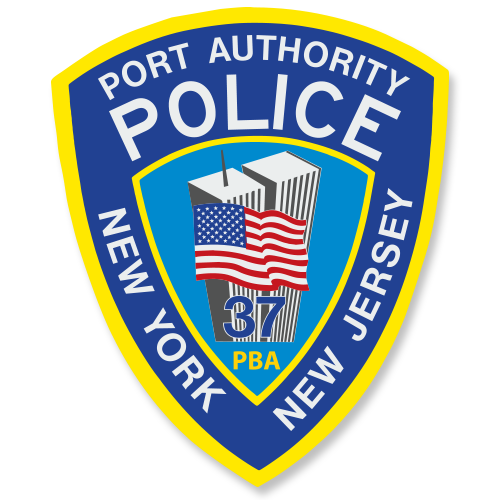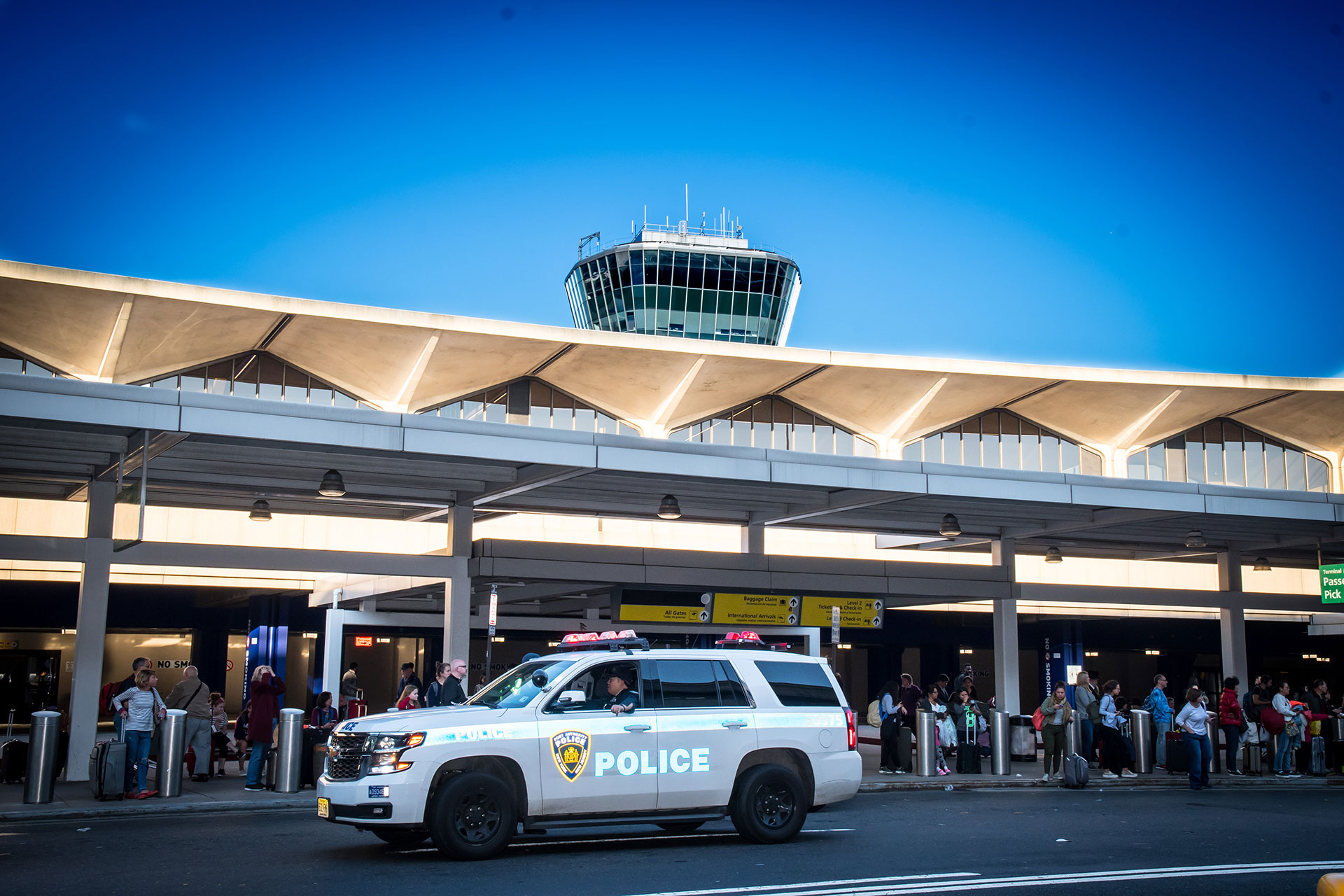- Air Train JFK
- Air Train Newark
- Atlantic City International Airport
- John F. Kennedy International Airport
- LaGuardia Airport
- Newark Liberty International Airport
- Stewart International Airport
- Teterboro Airport
The Port Authority Police Department (PAPD) maintains commands at the three major Port Authority of New York & New Jersey Airports; John F. Kennedy International Airport, LaGuardia Airport and Newark Liberty International Airport. These three airports represent the nation’s largest airport system handling more than 140 million passengers per year and employing hundreds of thousands. Each airport is a city unto itself requiring the dedicated, world class police services of the PAPD. Those services include, but are not limited to, uniformed patrol, anti-crime plainclothes units, criminal investigative detective squads, counter-terrorism units, high-value cargo escorts and patrols, dignitary protection, marine patrol, passenger screening point protection and security, Aircraft Rescue Fire Fighting and community outreach. The PAPD airport commands must also insure that all Federal Air Regulations and requirements regarding airport safety and law enforcement are maintained and enforced.
Unique to the PAPD is the Aircraft Rescue Fire Fighter (ARFF) Unit which is staffed and operated by Port Authority police officers. Each Port Authority police officer assigned to ARFF is a Federal Aviation Administration (FAA) certified aircraft rescue fire fighter and must requalify twice annually, twice the FAA requirement. The PAPD operates the busiest and largest ARFF Unit in the country. The ARFF Unit handles numerous aircraft emergencies daily and monitors thousands of aircraft movements each day.
In the aftermath of September 11, 2001, the Port Authority became required to provide police services to another Port Authority airport; Teterboro Airport. Teterboro, the nation’s busiest general aviation airport, is part of the PAPD’s Newark Airport Command which staffs patrol and ARFF services at Teterboro.
PAPD patrol and ARFF units continuously train and work together toward the best possible outcome in an aircraft emergency. Examples include the July 1992 TWA Flight 843 aborted takeoff crash at JFK Airport. The Lockheed L-1011 became engulfed in flames but the TWA crew and PAPD ARFF and patrol units rescued 292 people. There was no loss of life. Another example is the February 3, 2005 crash of a Canadair Challenger 600 at Teterboro Airport. The aircraft attempted to abort its takeoff on Runway 6, causing the aircraft to crash through an airport barrier fence, proceed across six lanes of New Jersey State Route 46 and collide into a Strawberry Clothing warehouse. Again, PAPD ARFF and patrol units rescued all on board.
Until September 2017, the PAPD JFK Command operated the PAPD Emergency Medical Response Unit providing no-cost emergency medical service (EMS) to the JFK Airport community for approximately 50 years. The Port Authority decided to disband the unit in favor of a for-payment service provided by a local hospital. Unfortunately, the JFK Airport Community is adversely affected by this move. The Port Authority PBA has taken steps to have this decision reversed. The PAPD JFK Command though still maintains approximately 250 public access Automated External Defibrillators (AED) throughout the airport. This program, started by PAPD Captain Kathy Mazza who was killed in the line of duty on September 11, 2001, at the World Trade Center, is responsible for saving numerous lives.
Aircraft Rescue Firefighting (ARFF)
PAPD Marine Unit
The Port Authority Police Department (PAPD) operates marine patrol units at LaGuardia and John F. Kennedy International Airports. Port Authority police officers assigned to marine patrol are trained in nautical operations and navigation, water rescue, marine law enforcement and emergency marine response. The primary responsibilities of the PAPD Marine Patrol are waterborne aircraft rescue and recovery and airport perimeter security and law enforcement. The PAPD Marine Patrol vessels are equipped with rescue rafts to accommodate the passenger capacities of the largest commercial aircraft.





